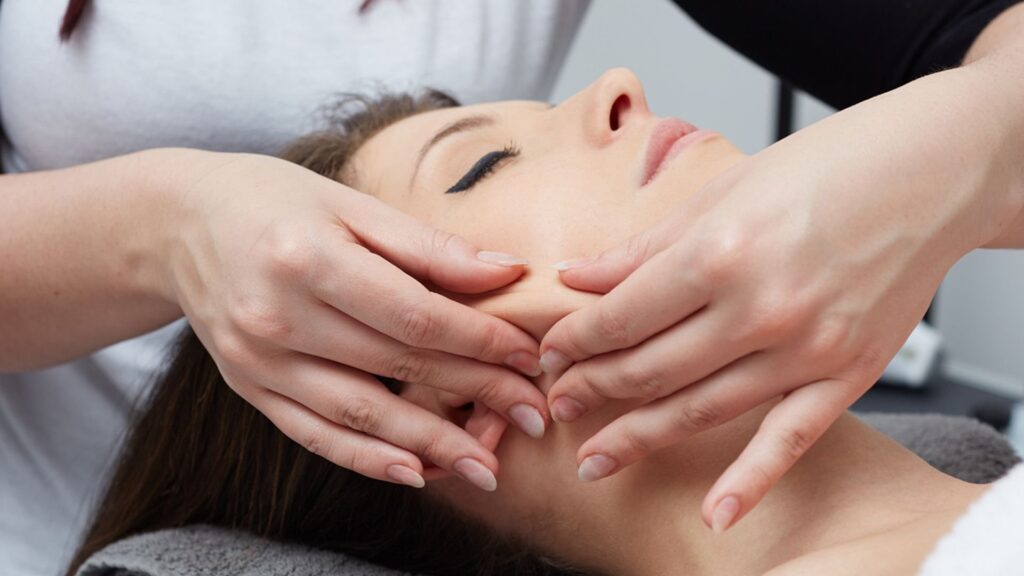In today’s fast-paced world, the pursuit of both health and beauty has become increasingly paramount. Amidst a plethora of techniques and treatments for enhancing facial skin, myofascial facial massage emerges as a standout option. This unique approach not only provides a sense of relaxation and comfort but also yields tangible improvements in skin quality.
Table of Contents
Understanding Myofascial Facial Massage
Myofascial facial massage is a specialized technique aimed at restoring and enhancing the muscles and fascia of the face. Fascia, dense fibers providing support and protection to muscles and organs, can become rigid and lose elasticity over time due to stress and inactivity, leading to wrinkles and facial contour loss. Myofascial massage targets these fascia, promoting relaxation and restoration, thereby enhancing blood and lymph circulation, stimulating skin cell renewal, and improving skin tone and elasticity. It effectively combats signs of aging while revitalizing overall skin health.

The Benefits Unveiled
- Improved Blood Circulation: By stimulating blood flow, myofascial massage facilitates the delivery of nutrients to skin cells, fostering a healthy, radiant complexion.
- Stimulated Skin Cell Renewal: Through its ability to kickstart the process of cell regeneration, this massage reduces the visibility of wrinkles and promotes skin renewal.
- Facial Muscle Relaxation: The massage induces relaxation in facial muscles, potentially alleviating headaches, enhancing sleep quality, and uplifting mood.
- Enhanced Skin Tone and Elasticity: By improving skin elasticity, myofascial massage restores firmness and youthfulness to the skin.
- Improved Facial Contour: Regular sessions contribute to refining facial contours, imbuing a more defined and youthful appearance.
- Reduction in Swelling: By enhancing lymphatic drainage, myofascial massage diminishes swelling and enhances complexion.
Who Can Benefit?
Myofascial facial massage is generally safe for most individuals, offering a rejuvenating experience with various target audiences in mind:
- Individuals with Aging Skin: The massage aids in stimulating skin regeneration, enhancing elasticity, and combating wrinkles, thus refining facial contours.
- Those with Under-eye Puffiness and Dark Circles: Improved circulation and lymphatic drainage reduce swelling and enhance complexion around the eyes.
- Individuals with Dull Complexions: Enhanced blood circulation imparts a radiant glow to the skin, revitalizing tired and pale complexions.
Frequency and Maintenance
To maximize the benefits of myofascial facial massage, consistency is key. While you may notice immediate improvements in skin texture and appearance after a single session, regular treatments are recommended for long-term results. The frequency of sessions may vary depending on individual skincare needs and goals, with many practitioners recommending weekly or bi-weekly sessions initially, followed by maintenance sessions every few weeks or months.
Conclusion
In a world where the pursuit of health and beauty reigns supreme, myofascial facial massage emerges as a holistic and effective skincare solution. By targeting the muscles and fascia of the face, this specialized technique offers a myriad of benefits, from improving blood circulation and stimulating skin cell renewal to enhancing facial contours and reducing swelling. Whether you’re seeking to combat signs of aging, diminish under-eye puffiness, or simply unwind and relax, myofascial facial massage provides a rejuvenating experience for all. So why wait? Transform your look and revitalize your skin with the power of myofascial facial massage today.
References
- Casagrande, D., Guglielmetti, M., & D’Angelo, C. (2020). Myofascial release therapy on improving sleep quality: A systematic review and meta-analysis. Complementary Therapies in Clinical Practice, 39, 101149. [DOI: 10.1016/j.ctcp.2020.101149]
- Findley, T. W., & Schleip, R. (Eds.). (2013). Fascia research II: Basic science and implications for conventional and complementary healthcare. Elsevier Health Sciences.
- Myers, T. W. (2014). Anatomy Trains E-Book: Myofascial Meridians for Manual and Movement Therapists. Elsevier Health Sciences.
- Holey, E., & Cook, E. (2010). Evidence-based Therapeutic Massage: A Practical Guide for Therapists. Elsevier Health Sciences.
- Overmann L., Schleip R., Anheyer D., Michalak J. (2024) Effectiveness of myofascial release for adults with chronic neck pain: a meta-analysis.